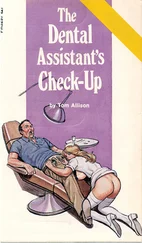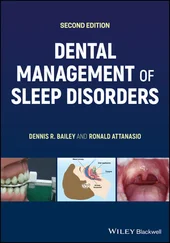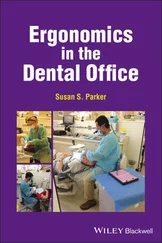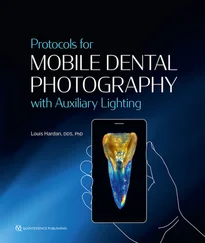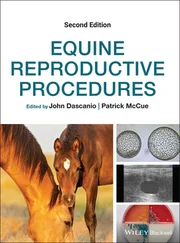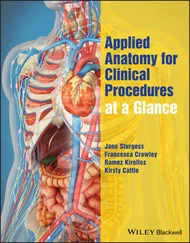Ziad Al-Ani - Practical Procedures in Dental Occlusion
Здесь есть возможность читать онлайн «Ziad Al-Ani - Practical Procedures in Dental Occlusion» — ознакомительный отрывок электронной книги совершенно бесплатно, а после прочтения отрывка купить полную версию. В некоторых случаях можно слушать аудио, скачать через торрент в формате fb2 и присутствует краткое содержание. Жанр: unrecognised, на английском языке. Описание произведения, (предисловие) а так же отзывы посетителей доступны на портале библиотеки ЛибКат.
- Название:Practical Procedures in Dental Occlusion
- Автор:
- Жанр:
- Год:неизвестен
- ISBN:нет данных
- Рейтинг книги:3 / 5. Голосов: 1
-
Избранное:Добавить в избранное
- Отзывы:
-
Ваша оценка:
- 60
- 1
- 2
- 3
- 4
- 5
Practical Procedures in Dental Occlusion: краткое содержание, описание и аннотация
Предлагаем к чтению аннотацию, описание, краткое содержание или предисловие (зависит от того, что написал сам автор книги «Practical Procedures in Dental Occlusion»). Если вы не нашли необходимую информацию о книге — напишите в комментариях, мы постараемся отыскать её.
A robust and accessible resource on occlusion for general dental practitioners Practical Procedures in Dental Occlusion
Practical Procedures in Dental Occlusion
Practical Procedures in Dental Occlusion — читать онлайн ознакомительный отрывок
Ниже представлен текст книги, разбитый по страницам. Система сохранения места последней прочитанной страницы, позволяет с удобством читать онлайн бесплатно книгу «Practical Procedures in Dental Occlusion», без необходимости каждый раз заново искать на чём Вы остановились. Поставьте закладку, и сможете в любой момент перейти на страницу, на которой закончили чтение.
Интервал:
Закладка:
Table of Contents
1 Cover
2 Dedication Page To my 2Ms: my wife Manal and son in law MohsiTo my 3Ls: my daughters Loujin, Lilas and Leanne Ziad Al-Ani To the Creator, My Mother and Father, Wife Azmat and my 4 children Zayd, Adam, Esa, Khadijah Riaz Yar
3 Title Page
4 Copyright Page
5 Acknowledgements
6 About the Companion Website
7 About the Book
8 1 Terminology References
9 2 Neuroanatomy – Why is It Important?Introduction Neuroanatomy Mastication Deglutition (Swallowing) Cognitive Trap Conclusion References Further Reading
10 3 What's of Use to Me in Practice? Armamentarium, Equipment and TechniquesThe Occlusal Examination Tray Shimstock Foil Articulating Papers Miller's Forceps Registration Media and Techniques Polyvinyl Siloxane Syringable Materials Centric Relation Record Facebow Registration Articulators How to Make a Stabilisation Splint (SS) Further Reading
11 4 I Don't Know What I Am Recording. Where Are the True Contacts?Scenario Rationale Procedure Conclusion References Further Reading
12 5 The Crown is HighScenario Rationale Procedure References
13 6 My Bite Feels Different What was the Most Likely Cause of the Patient's Complaint? How Can This Conformative Approach Be Adopted Practically? Can the Dentist Adjust the Teeth Opposing the Bridge to Improve the Occlusion and Hopefully Reduce the Patient's Discomfort? No! Further Reading
14 7 ‘My Front Tooth Filling Keeps Fracturing’Scenario Rationale Procedure Summary References
15 8 TMD and Occlusion – Is There a Link? Is There Any Evidence to Support the Use of Occlusal Adjustment as an Initial Therapy in TMD Management? Occlusal Adjustment for Treating TMD Patients Further Reading
16 9 How Would I Adjust a High Occlusal Contact?Scenario Rationale Equipment Procedure References
17 10 How Would I Ensure a Good Occlusion on Posterior Composite Restorations? Static Occlusion Occlusal Surface Morphology and Anterior Guidance Further Reading
18 11 My Front Teeth Feel Loose and Are Moving Retruded Contact Position Can Be Associated with Occlusal Problems Conforming to Existing Guidance When Restoring Anterior Teeth: Copying Anterior Guidance Clinical Case Further Reading
19 12 Canine Guidance or Group Function? Canine Guided OcclusionIntroduction Group Function Occlusion Mastication References Further Reading
20 13 Replacing Missing Teeth – Abutment is Involved with Guidance
21 14 The Space is Lost! Loss of Occlusal SpaceFollowing Crown Prep Dealing with This Problem Clinically Further Reading
22 15 My Front Teeth are WornScenario Rationale Procedure References Further Reading
23 16 All My Teeth Are Restored But Don't Meet Like They Did BeforeScenario Rationale Procedure References Further Reading
24 17 I Am Breaking My Teeth and Veneers and Lost a Tooth Due to GrindingScenario Rationale Occlusal Vertical Dimension Procedure References Further Reading
25 18 Occlusion on Implants. Any Difference?Good Occlusal Practice in Implantology Implant‐Protected Occlusion (IPO): The Ten General Principles Suggested Clinical Protocols Further Reading
26 Glossary of TermsGlossary of Terms Further Reading
27 Short Answer QuestionsShort Answer Questions
28 Index
29 End User License Agreement
List of Tables
1 Chapter 9Table 9.1 Optimal speed usage for burs.
2 Chapter 16Table 16.1 Typical symptoms mentioned by patients.
3 Chapter 17Table 17.1 Methods of analysing occlusion.
List of Illustrations
1 Chapter 2 Figure 2.1 Signal pathways. PDMR (afferent neurons) are triggered (sensory a... Figure 2.2 Chewing cycle data collected using MODJAW (for further details on...
2 Chapter 3 Figure 3.1 The occlusal examination tray. (1) Paper tissues held in Miller's... Figure 3.2 (a) Shimstock foil and (b) Shimstock in use as a feeler gauge bet... Figure 3.3 Shimstock can be used to ensure the accuracy of the mounting of t... Figure 3.4 Different shapes of articulating papers. Figure 3.5 The articulating papers must be placed simultaneously on the two ... Figure 3.6 Y‐type articulating paper holder. Figure 3.7 Articulating papers held by Miller's forceps.Figure 3.8 ‘Squash bite’ technique using pink sheet wax is not recommended....Figure 3.9 Full arch detailed occlusal registration.Figure 3.10 Excessive details on the occlusal registration may hinder seatin...Figure 3.11 A carefully trimmed registration limited to the area of tooth pr...Figure 3.12 Virtual bite registrations can be accurately obtained using intr...Figure 3.13 Passive manipulation of the mandible of a supine patient used fo...Figure 3.14 Greenstick impression compound used as a template into which the...Figure 3.15 (a–d) A suitable bite registration material is syringed between ...Figure 3.16 Earbow and accessories needed for facebow registration. (1) Slid...Figure 3.17 Marking the anterior reference point.Figure 3.18 A silicone bite registration material can be used as a bitefork ...Figure 3.19 The bitefork is placed on to the patient's upper teeth and stabi...Figure 3.20 Light indexing impression of the maxillary teeth on the bitefork...Figure 3.21 The earbow is guided into the patient's ears.Figure 3.22 The pointer is aligned with the anterior reference point on the ...Figure 3.23 Looking at the patient from the front, verify that the bow is ho...Figure 3.24 Finger screws 1 and 2 are securely tightened before removing the...Figure 3.25 The earbow assembly, transfer jig and bitefork are removed from ...Figure 3.26 (a) Transfer jig after detachment from the earbow, (b) screws 1 ...Figure 3.27 (a) A mounting shoe replaces the incisal guide table. (b) Transf...Figure 3.28 Simple hinge articulators (non‐anatomical occlude).Figure 3.29 Comparison of the radius from transverse horizontal axis to toot...Figure 3.30 Restorations constructed on a non‐anatomical articulator. Note t...Figure 3.31 Semi‐adjustable articulators allow adjustment to simulate mandib...Figure 3.32 Arcon type semi‐adjustable articulators have their condyles in t...Figure 3.33 Parts and components of the semi‐adjustable articulator. (1) Bit...Figure 3.34 The intercondylar distance in semi‐adjustable articulators is us...Figure 3.35 Condylar inclination (condylar guidance) is the angle made by th...Figure 3.36 (a) Condylar guidance on a semi‐adjustable articulator. The cond...Figure 3.37 The effect of altering the condylar guidance on the posterior te...Figure 3.38 Bennett angle.Figure 3.39 Bennett angle set in a semi‐adjustable articulator.Figure 3.40 Bennett movement set in a semi‐adjustable articulator.Figure 3.41 Movements of working side and non‐working side condyles in a sem...Figure 3.42 Fully adjustable articulator.Figure 3.43 Stabilisation splint (Michigan splint).Figure 3.44 Upper and lower models are mounted on a semi‐adjustable articula...Figure 3.45 Adequate relief of undercuts and initial polishing are carried o...Figure 3.46 Autopolymerising acrylic is used to reline a stabilisation splin...Figure 3.47 The SS was relined with autoploymerising acrylic intraorally at ...Figure 3.48 Thin articulating papers (two different colours) and straight ha...Figure 3.49 A balanced occlusion should be provided between the splint and o...Figure 3.50 (a) Centric relation stops marked using blue articulating paper,...
3 Chapter 4Figure 4.1 The masticatory system and its components.Figure 4.2 Basic terminology related to occlusion.Figure 4.3 A cross‐section through the cusps showing dish effect as shown on...Figure 4.4 Occlusal contacts and risks associated with incline contacts.Figure 4.5 The occlusal contacts in a Class 1 relationship. The contacts the...Figure 4.6 Articulating paper difference and precision related to minimal in...Figure 4.7 Shimstock hold and how to use.Figure 4.8 Dynamic occlusion assessment.Figure 4.9 Fremitus assessment.Figure 4.10 Completion of the scenario.Figure 4.11 Summary of the chapter.
Читать дальшеИнтервал:
Закладка:
Похожие книги на «Practical Procedures in Dental Occlusion»
Представляем Вашему вниманию похожие книги на «Practical Procedures in Dental Occlusion» списком для выбора. Мы отобрали схожую по названию и смыслу литературу в надежде предоставить читателям больше вариантов отыскать новые, интересные, ещё непрочитанные произведения.
Обсуждение, отзывы о книге «Practical Procedures in Dental Occlusion» и просто собственные мнения читателей. Оставьте ваши комментарии, напишите, что Вы думаете о произведении, его смысле или главных героях. Укажите что конкретно понравилось, а что нет, и почему Вы так считаете.


